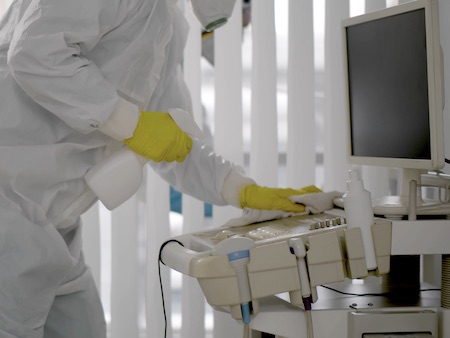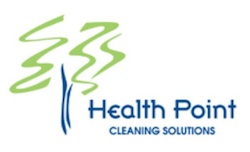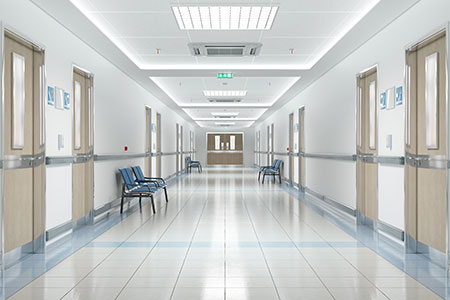Medical Office Cleaning in Minneapolis: Ensuring a hygienic healthcare environment. Learn best practices for sanitization, disinfection, and patient safety.
Medical office cleaning is a crucial aspect of maintaining a safe and hygienic healthcare environment. A clean medical office not only promotes patient well-being but also helps prevent the spread of infections and diseases. In Minneapolis, Minnesota, where healthcare standards are high, proper cleaning and disinfection of medical facilities are paramount.
Table of Contents
Key takeaways:
- Regular cleaning and disinfection are essential for patient and staff safety
- Specialized cleaning techniques are required for medical equipment and surfaces
- Proper waste management is critical in medical settings
- Professional cleaning services can ensure compliance with health regulations
- Tailored cleaning schedules can meet the unique needs of each medical office
The importance of cleanliness in medical offices

Medical office cleaning goes beyond just appearances. It’s a critical component of patient care and safety. In Minneapolis, where healthcare is a major industry, medical facilities must maintain the highest standards of cleanliness to protect patients, staff, and visitors from harmful pathogens.
A clean medical office creates a positive first impression for patients, instilling confidence in the care they will receive. More importantly, it reduces the risk of healthcare-associated infections (HAIs), which can be life-threatening, especially for patients with weakened immune systems.
Preventing the spread of infections
One of the primary goals of medical office cleaning is to prevent the spread of infections. This is particularly important in a city like Minneapolis, where seasonal flu and other contagious diseases can spread quickly in close quarters.
Regular cleaning and disinfection of high-touch surfaces such as doorknobs, light switches, and reception counters can significantly reduce the transmission of pathogens. In medical settings, these routine cleaning practices are even more critical due to the higher likelihood of encountering infectious agents.
Creating a healthy work environment for staff
While patient safety is paramount, the health of medical staff is equally important. A clean office environment helps protect healthcare workers from exposure to potentially harmful substances and reduces their risk of occupational illnesses.
In Minneapolis, where healthcare workers are in high demand, maintaining a clean and safe workplace can also aid in staff retention and job satisfaction. A well-maintained office shows that the management values the well-being of its employees.
Specialized Cleaning Techniques for Medical Offices

Medical office cleaning requires specialized knowledge and techniques that differ from standard commercial cleaning. These specialized methods ensure that all areas of the medical facility are properly sanitized and disinfected.
Cleaning and disinfecting medical equipment
Medical equipment requires careful handling and specific cleaning protocols. From examination tables to diagnostic tools, each piece of equipment needs to be cleaned and disinfected according to manufacturer guidelines and healthcare regulations.
In Minneapolis, where many medical offices use advanced technology, cleaning staff must be trained to handle sophisticated equipment without causing damage while ensuring thorough disinfection.
Handling biohazardous materials
Medical offices often deal with biohazardous materials, including bodily fluids and contaminated waste. Proper handling and disposal of these materials are critical to prevent the spread of infections and comply with health and safety regulations.
Cleaning staff must be trained in the proper use of personal protective equipment (PPE) and follow strict protocols for handling and disposing of biohazardous waste. This is particularly important in a city like Minneapolis, where environmental regulations are strictly enforced.
The Role of Professional Cleaning Services
While some medical offices may have in-house cleaning staff, many in Minneapolis opt for professional cleaning services that specialize in healthcare facilities. These services offer several advantages:
Expertise in healthcare cleaning standards
Professional cleaning services that focus on medical facilities have in-depth knowledge of healthcare cleaning standards and regulations. They stay updated on the latest guidelines from health authorities and can ensure that your medical office remains compliant.
Use of appropriate cleaning products and equipment
Medical office cleaning requires the use of hospital-grade disinfectants and specialized equipment. Professional services have access to these products and tools, which may not be readily available to in-house cleaning staff.
Tailored cleaning schedules
Every medical office has unique needs based on its specialization, patient volume, and operating hours. Professional cleaning services can create customized cleaning schedules that minimize disruption to your practice while ensuring thorough cleaning and disinfection.
Cleaning Protocols for Different Areas of a Medical Office
Different areas within a medical office require specific cleaning approaches. Here’s a breakdown of cleaning protocols for various spaces:
Reception and waiting areas
These high-traffic areas need frequent cleaning throughout the day. Focus on disinfecting surfaces like chairs, tables, and countertops. In Minneapolis, where winters can be harsh, pay extra attention to entryways where dirt and salt may be tracked in.
Examination rooms
Exam rooms require thorough cleaning and disinfection between patients. This includes changing table paper, wiping down all surfaces, and properly disposing of any used materials.
Restrooms
Medical office restrooms need to be cleaned and disinfected multiple times daily. Pay special attention to high-touch surfaces like faucets, flush handles, and door handles.
Staff areas
While not directly patient-facing, staff areas like break rooms and offices still need regular cleaning to maintain a healthy work environment.
Waste Management in Medical Offices
Proper waste management is a critical aspect of medical office cleaning. In Minneapolis, where environmental consciousness is high, it’s important to follow local regulations for waste disposal.
Segregation of waste
Medical offices generate various types of waste, including general trash, recyclables, and medical waste. Proper segregation is essential for safe disposal and compliance with regulations.
Safe disposal of sharps and medical waste
Sharps and other medical waste require special handling and disposal methods. In Minneapolis, there are specific guidelines for the disposal of these materials, and professional cleaning services are well-versed in these requirements.
Training and Certification for Medical Office Cleaners
Cleaning staff working in medical offices should receive specialized training. In Minneapolis, there are several programs available for certification in healthcare cleaning.
OSHA Compliance
Cleaners should be trained in Occupational Safety and Health Administration (OSHA) standards relevant to healthcare settings. This includes proper use of PPE and handling of hazardous materials.
Continuing education
The field of medical cleaning is constantly evolving. Regular training and continuing education ensure that cleaning staff stay up-to-date with the latest best practices and technologies.
Choosing the Right Cleaning Service for your Medical Office
When selecting a cleaning service for your medical office in Minneapolis, consider the following factors:
Experience in healthcare cleaning
Look for a service with a proven track record in cleaning medical facilities. They should be familiar with the unique challenges and requirements of healthcare environments.
Licensing and insurance
Ensure that the cleaning service is properly licensed to operate in Minneapolis and carries adequate insurance coverage.
References and reviews
Check references and online reviews from other medical offices in the Minneapolis area to gauge the quality of service.
The Impact of COVID-19 on Medical Office Cleaning
The COVID-19 pandemic has significantly impacted cleaning protocols in medical offices. In Minneapolis, as in the rest of the country, there’s been an increased focus on disinfection and air quality.
Enhanced disinfection protocols
Many medical offices have implemented more frequent cleaning and disinfection of high-touch surfaces. The use of EPA-approved disinfectants effective against SARS-CoV-2 has become standard practice.
Air quality management
Improved ventilation and air filtration have become important considerations in medical office cleaning. Some facilities in Minneapolis have invested in HEPA air purifiers to enhance indoor air quality.
Technology in Medical Office Cleaning
Advancements in cleaning technology have improved the efficiency and effectiveness of medical office cleaning.
Electrostatic sprayers
These devices apply an electric charge to disinfectants, allowing them to wrap around and evenly coat surfaces for more thorough disinfection.
UV-C light disinfection
Some medical offices in Minneapolis are using UV-C light technology for additional disinfection, especially in areas that are difficult to clean manually.
Seasonal Considerations for Medical Office Cleaning in Minneapolis
Minneapolis experiences distinct seasons, each bringing unique cleaning challenges for medical offices.
Winter cleaning challenges
Winter in Minneapolis brings snow, ice, and salt, which can be tracked into medical offices. Extra attention to entryways and floor cleaning is necessary during this season.
Spring and fall allergy seasons
During allergy seasons, more frequent dusting and vacuuming may be necessary to maintain good indoor air quality for patients with respiratory sensitivities.
Green Cleaning Practices for Medical Offices
Many medical offices in Minneapolis are adopting green cleaning practices to reduce their environmental impact and create healthier indoor environments.
Eco-friendly cleaning products
Using environmentally friendly cleaning products can be just as effective as traditional chemicals while being safer for staff and patients with sensitivities.
Energy-efficient cleaning equipment
Investing in energy-efficient cleaning equipment can reduce the overall environmental footprint of medical office cleaning.
Cost Considerations for Medical Office Cleaning
While professional cleaning services may seem costly, they can be a worthwhile investment for medical offices in Minneapolis.
Long-term benefits
Professional cleaning can help prevent the spread of infections, potentially reducing liability and improving patient outcomes.
Customized cleaning plans
Many cleaning services offer customized plans that can fit various budgets while still meeting the essential cleaning needs of a medical office.
Maintaining Cleanliness between Professional Cleanings
While professional cleaning services are invaluable, maintaining cleanliness throughout the day is a team effort.
Staff responsibilities
Medical staff should be trained in basic cleaning and disinfection procedures to maintain cleanliness between professional cleanings.
Patient Education
Educating patients about hand hygiene and other infection prevention measures can help maintain a cleaner environment.
Conclusion
Medical office cleaning is a critical aspect of healthcare that goes far beyond simple tidiness. In Minneapolis, where healthcare standards are high, proper cleaning and disinfection of medical facilities are essential for patient safety, staff well-being, and regulatory compliance. By understanding the unique requirements of medical office cleaning and partnering with professional services, healthcare providers can ensure a safe, clean, and welcoming environment for all who enter their doors. For more information, you can visit our website or contact us.
| Area | Cleaning Frequency | Special Considerations |
|---|---|---|
| Reception | Multiple times daily | Focus on high-touch surfaces |
| Exam Rooms | After each patient | Change table paper, disinfect all surfaces |
| Restrooms | 2-3 times daily | Thorough disinfection of all fixtures |
| Staff Areas | Daily | Encourage staff to maintain cleanliness |
| Equipment | As per manufacturer guidelines | Use appropriate cleaning agents |
| Cleaning Task | Standard Cleaning | COVID-19 Enhanced Cleaning |
|---|---|---|
| Surface Disinfection | Daily | Multiple times daily |
| Air Filtration | Weekly filter change | Daily filter check, consider HEPA filters |
| Waste Disposal | End of day | More frequent throughout day |
| Hand Sanitizer Stations | Weekly refill | Daily check and refill |
| Deep Cleaning | Monthly | Weekly or bi-weekly |
- Key steps for maintaining cleanliness between professional cleanings:
- Implement a hand hygiene protocol for all staff and patients
- Regularly wipe down high-touch surfaces throughout the day
- Promptly clean up any spills or visible dirt
- Ensure proper disposal of waste in designated containers
- Maintain good ventilation by opening windows when possible
- Encourage staff to keep personal workspaces tidy
- Schedule regular checks of restrooms and waiting areas
- Medical office cleaning is crucial: According to the Centers for Disease Control and Prevention (CDC), “cleaning of the environment, including floors, surfaces, and medical equipment, is a critical aspect of infection control”.
- Frequency of cleaning: The Occupational Safety and Health Administration (OSHA) recommends that “routine cleaning and disinfection of environmental surfaces should be done at least daily in healthcare settings” .
- Types of cleaning: Medical office cleaning typically includes tasks such as dusting, vacuuming, mopping, and disinfecting high-touch surfaces like door handles, keyboards, and countertops.
- Importance of disinfection: Disinfection is an essential part of medical office cleaning, as it helps to eliminate germs and prevent the spread of infections.
- Use of EPA-registered disinfectants: The Environmental Protection Agency (EPA) recommends using EPA-registered disinfectants for medical office cleaning, as they have been proven effective against a wide range of bacteria, viruses, and other microorganisms.

